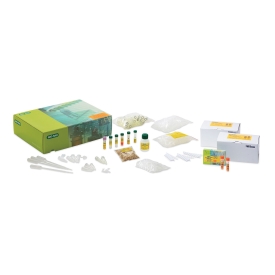
Description
Description
Polymerase chain reaction (PCR) is now such a fundamental technique in the biotechnology laboratory that L. A. Pray wrote in 2004: "PCR is to biology what petroleum is to transportation." PCR is a basis for multiple ways — ranging from DNA fingerprinting and sequencing to mutagenesis — to analyze and detect nucleic acids. Real-time PCR is an extremely valuable analytical tool that not only reveals what DNA is present but how much. Real-time PCR is becoming the most widely used PCR application for genomic and gene expression analysis in research laboratories; it also is rapidly establishing itself as a technique in the clinical diagnostic lab. The need for faster, more accurate, and more economical systems with a high throughput has fueled the popularity of real-time PCR.
Using genomic DNA as the template for amplification, real-time PCR can be used in infectious disease diagnostics to rapidly determine levels of specific pathogens in various tissues. The molecular diagnostic laboratory also relies heavily on real-time PCR for detecting aneuploidies and diagnosising other genetic diseases. In microbiology laboratories, real-time PCR can be used to detect and quantitate various microbial contaminants in environmental samples.
The GMO Investigator real-time PCR starter kit is designed for teaching students the principles of PCR and its use in testing foods for the presence of genetic modifications. This kit can be used to quantitate the amount of DNA in a plant and to compare it with the level of genetically modified DNA that is recovered from each food sample. It is even possible to determine what fraction of a food product is made with genetically modified ingredients, in the same manner as standard testing laboratories do.
Reference
Pray LA (2004). Consider the Cycler, The Scientist 18, 34–37.

